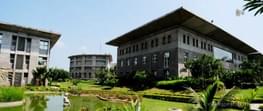Interview by Bhawna Rawat
.png)
Dr. Pramath Sinha is currently working as a Provost in Anant National University. He had been the Founding Dean of Indian School of Business (ISB) and Founder and Trustee of Ashoka University. He holds MSE and PhD degrees in mechanical engineering and applied mechanics from the University of Pennsylvania and a B.Tech in metallurgical engineering from the Indian Institute of Technology, Kanpur.
Dr. Sinha spent 12 years with McKinsey as a partner. During his McKinsey tenure, he assisted both public and private sector clients in a diverse set of industries on issues relating to business strategy and performance improvement in North America and Asia. After starting his career in the North American Practice, he moved to India in 1997 and helped build and grow the Indian Practice. He led McKinsey India’s telecom, IT, and media practices as well as its organisation practice, where he focused on issues of transformation and leadership.
Dr. Sinha has assisted several blue-chip Indian companies in transforming their existing organisations to world-class levels. He has worked closely with several MNCs in overcoming their organisational and leadership challenges whilst setting up world-class operations in India. Before founding 9.9 Media last year, he was the MD & CEO of ABP Private Limited, one of India’s most prominent and diversified media conglomerates.
Dr. Pramath Raj Sinha’s experience in the Education Industry
I’ve personally benefitted a lot from the education opportunities I got. If I see where I am today, a lot of what I’ve become over time has to do with those opportunities, and what I learnt in school and college. I chanced upon education sector late in my career and started working on setting up new institutions, colleges and universities. As I got more involved, I was amazed to see the transformation in some of the people who went through those programmes. I realised that there was a certain sense of satisfaction that came out of seeing how much people were able to change, grow, and do better through the interventions that you make. Working in this industry gives me an opportunity to make a real difference and do that across so many different types of education.
Dr. Sinha on how he ensures that outstanding teaching and learning practices are embedded across Anant National University
We constantly strive to get the best students. And the best doesn't always mean that they have to be the brightest students; they're the ones who are really committed to learning, want to make the effort and have the right attitude towards learning. Then we make sure that they are paired up with the most inspiring faculty. This combination of motivated students working closely with encouraging faculty is what helps us attain outstanding results in teaching and learning practices.

Dr. Sinha’s leadership style
A part of my leadership style is to recruit very high-quality people, give them the freedom to do things as they want to do, but equally also provide them with direction. We work in a very exciting field and I like to make them feel the same way.
For students, I try to make sure that I’m available to them at least in some measure. For example, whenever I'm at the campus, I'm always setting up a time to meet two or three students in the day. These one-on-one meetings are really valuable, and I believe if we can touch even a few students, it sends a message across that you're accessible. Also, almost every month, I try to find a way to address the student council or the whole student body. It isn’t as effective for interactional conversations with students but is important nonetheless.
Dr. Sinha on what makes Anant National University stand apart from the rest
At Anant National University, there's a track record of involving people who have built and studied in really top notch global institutions. What we're trying to build here is something that compares with the best in the world. And to support that, the curriculum we’ve designed is very different from what other universities offer. Most people like to cram the students with lots of knowledge and technical skills and impose subjects that they have to study and courses they have to learn. Here, at Anant University, we implore students to develop and polish cognitive, social and emotional skills. In addition to all of that, the liberal arts perspective woven into all our practices and lessons also helps us distinguish ourselves from all other universities in the country.

Changes incurred by Dr. Sinha in the university’s curriculum to make sure the students are well versed with the best industry practices
The design has become mainstream. Earlier, it was confined to just creating products or designing something special, but now every field is incorporating elements of design and design thinking. Be it policymakers, medical practitioners, or media and digital professionals, everyone is talking about design. And this is reflected in our curriculum - we are trying to create design professionals who can work in any field, and not just create a piece of furniture or design a fixture. This inherently also means that the students will have to be somebody who is very versatile in their education, awareness, and level of comfort in dealing with multiple things. Our multi-disciplinary curriculum takes care of that too. It imparts certain foundational skills in students irrespective of their specialisations that can stand them in good stead as they go through transitions in their careers. These foundational skills revolve around critical thinking, problem-solving, communication, working well with others, having a strong work ethic, and so on. Collectively, all of this helps us position our students much better for the future.
Dr. Sinha’s views on the growth of students through placement opportunities available at Anant National University, Ahmedabad
Most universities don't go out of their way to get jobs for their students, especially in the fields of architecture and design. Placements are more prevalent for MBA or engineering students, as getting them jobs is a big part of the institutional responsibility. But we believe that regardless of the field, in India, you have an obligation to help students find jobs. And so, even though we are focused on design and architecture, we are going to make sure that our students get the best possible jobs in the best possible companies at the best possible compensation levels. And when we put more efforts into our curriculum and overall education, it shows in the quality of people that graduate and employers see that difference.
Challenges faced by Dr. Sinha all these years
The big challenge we face is that we are a private Design university, and there are many other private universities which offer architecture and design programmes. There's a lot of clutter. And everybody claims to be the better one. So, amidst this, it’s quite challenging to convince people about not just your good intentions but also about what you are trying to do and what you are delivering.
Dr. Sinha on how he has assessed the effectiveness of teaching and learning in Anant National University, Ahmedabad
One of the practices we have is to assess the performance of teachers. We collect very rigorous feedback from students every semester at the end of their course on each faculty’s teaching. And we relay that back to the faculty member with some qualitative suggestions on how they can improve. Based on that, we have been doing faculty development programmes and training programmes for our faculty. So that's how it informs what we do. On the student side again, of course, there is the regular examination but we track very carefully how many students are passing and failing, where they're struggling, and what we can do to provide support to them.
Over the semesters, we have invited many eminent guest faculties to teach our students; they not only give lectures and interact with students but also give valuable, industry-relevant feedback. In the field of architecture and design, we have a practice of having juries, which is another way to get feedback and assessment.
Recently, we had a process of accreditation by the Council of Architecture (COA) wherein two senior faculties came to the campus to assess Anant National University, and in that assessment, they spoke to our students and faculty and then they fed back to us. A lot of their feedbacks were around the fact that they found our students and faculty to be very committed and enthusiastic. So all of that adds to the constant feedback we collect to grow and improve. Great institutions get built like that, by constantly improving and striving for perfection.

Read more about faculty available at Anant National University
Dr. Sinha’s strategies for Anant National University for the next few years
We are broadly going to have faculty from every field that you can touch in terms of design. One good indicator of this is if you just look at the faculty we've hired this year: we've hired somebody who is an architect, somebody who is a planner, somebody who is into community-level planning and does a lot of grassroots work, a product designer who comes from an automotive design background, an engineer and a designer who is into interiors and signage, somebody who does grassroots sustainability work and is also a physicist and engineer by training, somebody who designs museums and exhibits, a sculptor, and a visualiser and designer who comes from Interaction Design and Visualisation Perspective. So that's the exciting thing about this field of design that you can actually get people from very different fields to come together and make a very rich experience for our students.

Dr. Sinha’s message for the youth who aspire to be young leaders
They should realise that all of them have tremendous potential to grow and do better; somewhere in their lives, they are going to be able to do things that they never imagined were possible. So they should dream big and aim high, but at the same time keep their feet firmly on the ground. The youth should learn that nobody wins a lottery in life and everyone has to work their way up by putting in their best efforts, especially in the early days of their career. There is no other way.

![Anant National University - [AnantU]](https://image-static.collegedunia.com/public/college_data/images/appImage/1638555013cover.png?h=240&w=1000&mode=crop)
![Anant National University - [AnantU]](https://image-static.collegedunia.com/public/college_data/images/logos/1638174829download.jpg?h=71.7&w=71.7&mode=stretch)


















![International School of Design - [INSD]](https://image-static.collegedunia.com/public/college_data/images/appImage/undefined?h=111.44&w=263&mode=stretch)



![Gandhi Institute of Fashion and Textile - [GIFT]](https://image-static.collegedunia.com/public/college_data/images/appImage/6793_GIFT.jpg?h=111.44&w=263&mode=stretch)

![Inter National Institute of Fashion Design - [INIFD]](https://image-static.collegedunia.com/public/college_data/images/appImage/1487335620Inifd0DriveInRoadAhmedabad.jpg?h=111.44&w=263&mode=stretch)





![National Institute of Design - [NID]](https://image-static.collegedunia.com/public/college_data/images/appImage/5884_VKS_8846.jpg?h=111.44&w=263&mode=stretch)

















 (88).png?h=72&w=72&mode=stretch)
.png?h=72&w=72&mode=stretch)

.png?h=72&w=72&mode=stretch)



![Indus University, Institute of Design Environment and Architecture - [IDEA]](https://image-static.collegedunia.com/public/college_data/images/logos/1507791103j.jpg?h=72&w=72&mode=stretch)
![GLS University, GLS Institute of Design - [GLSID]](https://image-static.collegedunia.com/public/college_data/images/logos/1743445749GLSLOGO1.png?h=72&w=72&mode=stretch)

![Shantaben Manubhai Patel School of Studies & Research in Architecture and Interior Design - [SMAID]](https://image-static.collegedunia.com/public/college_data/images/logos/1562662953118115071446876935641326718449695697719674n.png?h=72&w=72&mode=stretch)

![L.J. School of Architecture - [LJSA]](https://image-static.collegedunia.com/public/college_data/images/logos/1562323050LJSA.png?h=72&w=72&mode=stretch)
![Indubhai Parekh School of Architecture - [IPSA]](https://image-static.collegedunia.com/public/college_data/images/logos/1705927603IPSALogo.jpg?h=72&w=72&mode=stretch)




![Inter National Institute of Fashion Design - [INIFD]](https://image-static.collegedunia.com/public/college_data/images/logos/1487335620logoarea.jpg?h=72&w=72&mode=stretch)
![Gandhi Institute of Fashion and Textile - [GIFT]](https://image-static.collegedunia.com/public/college_data/images/logos/col6793.jpg?h=72&w=72&mode=stretch)




Comments